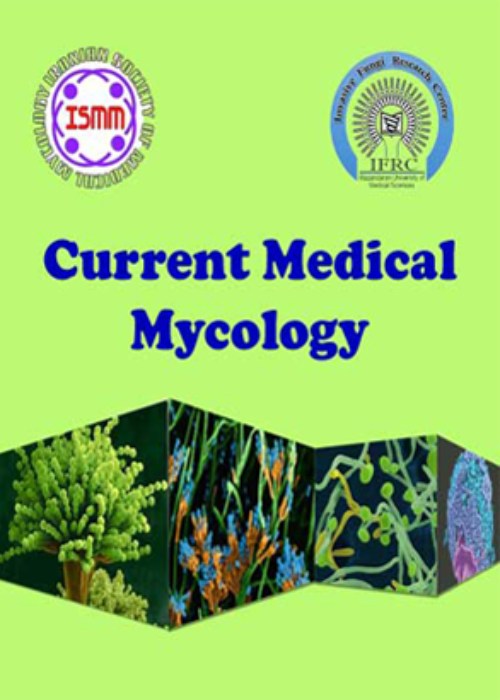Phenotypic and genotypic characterization of Candida species isolated from candideamia in Iran
Author(s):
Article Type:
Research/Original Article (دارای رتبه معتبر)
Abstract:
Background and
Purpose
Candidemia is one of the most important fungal infections caused by Candida species. Infections and mortality caused by Candida species have been on a growing trend during the past two decades. The resistance of yeasts to antifungal drugs and their epidemiological issues have highlighted the importance of accurately distinguishing the yeasts at the species level. The technique applied for yeast identification should be fast enough to facilitate the imminent initiation of the appropriate therapy. Candidemia has not been studied comprehensively in Iran yet. Regarding this, the current study aimed to assess the epidemiology of candidemia at Tehran hospitals and compare the results with the previous findings.
Materials and Methods
This study was conducted on 204 positive blood cultures obtained from 125 patients hospitalized in several hospitals located in Tehran, Iran, within a period of 13 months. The yeast isolation and species identification were accomplished using several phenotypic methods (i.e., production of germ tube in human serum, culture on CHROMagar Candida, and Corn meal agar containing Tween 80) and molecular methods, such as polymerase chain reaction-restriction fragment length polymorphism (PCR-RFLP). In addition, unknown cases were subjected to PCR sequencing. These methods were then compared in terms of accuracy, sensitivity, and speed of identification.
Results
According to the results, C. albicans (62.4%) was the most common isolate, followed by C. parapsilosis (n=36, 17.5%), C. glabrata (n=18, 8.8%), C. tropicalis (n=13, 6.3%), Trichosporon asahii (n=3, 1.5%), C. kefyr (n=2, 1.0%), C. lusitaniae (n=2, 1.0%), C. intermedia (n=1, 0.5%), C. guilliermondii (n=1, 0.5%), and C. krusei (n=1, 0.5%), respectively.
Conclusion
As the findings indicated, the most common species causing candidemia were C. albicans, C. parapsilosis, and C. glabrata, respectively. Children less than one year old and people with cancer were at higher risk for candidemia, compared to other groups. Moreover, phenotypic and molecular methods resulted in the identification of 65.2% and 96.6% of the isolates, respectively. Consequently, PCR-RFLP could be concluded as a more favorable technique for species identificationKeywords:
Language:
English
Published:
Current Medical Mycology, Volume:4 Issue: 2, Jun 2018
Pages:
14 to 20
magiran.com/p1892726
دانلود و مطالعه متن این مقاله با یکی از روشهای زیر امکان پذیر است:
اشتراک شخصی
با عضویت و پرداخت آنلاین حق اشتراک یکساله به مبلغ 1,390,000ريال میتوانید 70 عنوان مطلب دانلود کنید!
اشتراک سازمانی
به کتابخانه دانشگاه یا محل کار خود پیشنهاد کنید تا اشتراک سازمانی این پایگاه را برای دسترسی نامحدود همه کاربران به متن مطالب تهیه نمایند!
توجه!
- حق عضویت دریافتی صرف حمایت از نشریات عضو و نگهداری، تکمیل و توسعه مگیران میشود.
- پرداخت حق اشتراک و دانلود مقالات اجازه بازنشر آن در سایر رسانههای چاپی و دیجیتال را به کاربر نمیدهد.
In order to view content subscription is required
Personal subscription
Subscribe magiran.com for 70 € euros via PayPal and download 70 articles during a year.
Organization subscription
Please contact us to subscribe your university or library for unlimited access!


